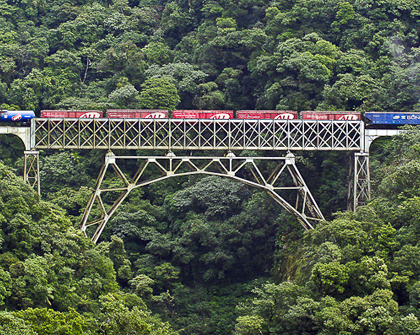The WTO’s regulatory framework divides trade into two major sectors: goods and services. How e-commerce is classified will determine how it is regulated at the WTO.
The WTO was given the mandate to discuss the issue of e-commerce at the Singapore Ministerial Conference in 1996. In its program on e-commerce, the WTO defined this as being “the production, distribution, marketing, or sale of goods and services by electronic means.”
E-commerce was the topic of intense debate at the WTO at the beginning of the 2000s, primarily within the Council for Trade in Services and the Committee on Trade and Development. Member countries’ interest in the matter gradually waned until discussions resumed recently.
| Council for Trade in Services | · The electronic provision of services is covered by the General Agreement on Trade in Services (GATS), regardless of how the service is delivered.
· market liberalization in areas of interest to developing countries could facilitate access to technology and infrastructure in these countries. · the expansion of e-commerce has led to reduction in restrictive practices, but the applicability of competition and resource administration safeguards needs to be examined. · GATS article XIV applies to any measure that restricts trade in services, provided that this is no more restrictive than necessary. · the way a service is provided does not change a country’s commitments within the WTO as expressed in its list of commitments on services. · the Annex on Telecommunications, one of the agreements related to trade in services, applies to issues of internet access and use. · GATS does not impose tariffs on the electronic transmission of a service but if what is transmitted is a good, tariffs may be applied, although there is currently a moratorium on this type of tariff. · all services are covered no matter how they are delivered, although some of these products could be classified as goods. |
| Council for Trade in Goods
|
· if an electronic delivery may qualify as a good, then it is subject to GATT, tariffs may be applied to it, its classification within the Harmonized System is not straightforward, and the Agreements on Customs Valuation and Technical Barriers to Trade (TBT) may apply to it, as might the other WTO agreements that govern trade in goods within the WTO.
· the 1998 decision to establish a moratorium on customs duties on electronic transmissions was extended again in 2015.
|
| Council for TRIPS
|
· examined issues relating to copyright and other rights relating to e-commerce, the protection and observance of brand names and trademarks, new technologies, and access to technology.
· it addressed measures for combating piracy and the fair use of a purchased good, the responsibility of internet service providers to monitor compliance with the protection of intellectual property rights, and standards that might form part of regional agreements.
|
| Committee on Trade and Development
|
Issues to be considered:
· the effects of e-commerce on SMEs in developing countries and ways to maximize the benefits they obtain from it. · the challenges facing developing countries when participating in e-commerce as exporters of products that are delivered by electronic means, ways of improving this involvement, improved access to infrastructure and technology transfer; the movement of natural persons; and the use of information technology in the integration of developing countries into the multilateral trading system. · implications of the possible repercussions of e-commerce on traders of traditional physical goods in developing countries. · and the financial implications of e-commerce.
|
| Information Technology Agreement | · cutting tariffs on information technology goods to zero. This issue is covered by the Information Technology Agreement, which is plurilateral (it was signed by 53 WTO member countries) but is unusual in that it applies the most favored nation principle. This agreement covers trade worth US$1.3 trillion per year and aims to eliminate tariffs on 100% of the products covered by the agreement within seven years, which would amount to 10% of global trade. |
The Declaration from the Bali Ministerial Conference (2013) included a mandate for the members to revitalize work on the issue, focusing on the overlap between e-commerce and development and emphasizing the need to improve internet connectivity, access to information technologies, telecommunications, and public internet sites. The Bali Declaration also urged members to consider the economic opportunities of development, paying particular attention to developing countries, least developed countries, and those with lower connectivity levels, and to consider the opportunities that e-commerce may bring SMEs and their difficulties in gaining access to it. With this objective, the declaration established periodic reviews at the General Council and the extension of the moratorium on the introduction of tariffs and duties on e-commerce transactions.
The 2015 Nairobi Declaration continued with the work begun in 2013 and mandated biannual reviews at the General Council and once again extended the moratorium on duties and tariffs.
Current Work
In the last few months of 2016, some WTO members began to raise certain issues with a view to reviving discussions on e-commerce and obtaining potential deliverables, be it at the next Ministerial Conference in Buenos Aires (2017) or as part of a subsequent continuation of this negotiation.
E-commerce is a cross-cutting theme that runs through different areas of the WTO.[1] It is a standing item on the agenda of the General Council, which is the highest decision-making body within the WTO, and mandates on it have also been given to the Council for Trade in Services, the Council for Trade in Goods, the Council for TRIPS, and the Trade and Development Committee[2]. There is also a specific session on e-commerce within the General Council.
As part of recent discussions that took place within different areas of the WTO, the following conclusions were reached:
The Challenges and Opportunities of E-Commerce. Challenges for the Private Sector.
Traditional business models are being challenged by microscale activities and new consumption patterns.
It is estimated that global retail sales in the United States will reach about US$24 trillion. Likewise, global e-commerce sales in the United States are expected to exceed US$2 billion for 2016, representing 8.6% of total retail sales. It is expected that 12.8% of total retail sales in 2019 will take place online.[3]
To integrate into the global market through e-commerce, small and medium-sized enterprises need good access to efficient, reliable, and safe transportation, and to develop capacities that allow them to acquire knowledge of international regulations. SMEs seeking global coverage through access to foreign markets must often overcome language barriers and the impossibility of establishing their own supply chains. They also need to obtain representation before international governments and forums.
This will require coordination among the different stakeholders: exporters, importers, carriers, customs and border agencies; cooperation on the part of customs and tax authorities; with the WTO as the driving force behind this work.
Key words: WTO, e-commerce, development.
[1]Market access issues that facilitate e-commerce; regulatory issues such as the location and flow of data, privacy, and consumer protection; and physical, regulatory, and human capital–related infrastructure issues such that the country can integrate into international trade.
[2]TRIPS: WTO Agreement on Trade-Related Aspects of Intellectual Property Rights.
[3]Worldwide e-commerce retail sales, e-Marketer, December 2015, www.eMarketer.com.




